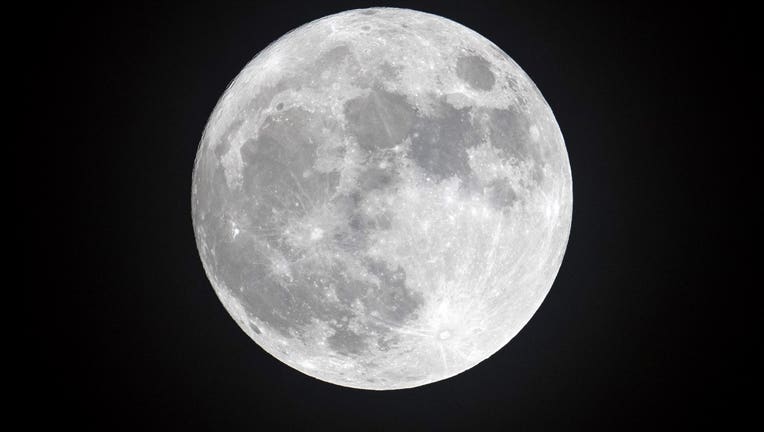NASA says water has been spotted on the sunlit surface of the moon

NASA announced it has discovered water on the sunlit surface on the moon.
NASA’s Stratospheric Observatory for Infrared Astronomy (SOFIA) confirmed on Monday that for the first time, water on the sunlit surface of the Moon has been discovered.
They said that this indicates that water may be distributed across the lunar surface, and not limited to cold, shadowed places.
The water was reportedly discovered in the Clavius Crater. This is said to be one of the largest craters visible from Earth and it is located in the Moon’s southern hemisphere. Data from here revealed water in concentrations of 100 to 412 parts per million – about a 12-ounce bottle of water – in a cubic meter of soil spread across the lunar surface.
GET THE NEWS YOU NEED TO KNOW: SIGN UP FOR FOX 35 NEWS EMAILS
“We had indications that H2O – the familiar water we know – might be present on the sunlit side of the Moon,” said Paul Hertz, director of the Astrophysics Division in the Science Mission Directorate at NASA Headquarters in Washington. “Now we know it is there. This discovery challenges our understanding of the lunar surface and raises intriguing questions about resources relevant for deep space exploration.”
The new discovery brings up new questions on how water is created and how it persists on the harsh, airless lunar surface, NASA said. With the upcoming manned Artemis mission to the moon, the agency is said to be eager to learn all it can about the presence of water.
“Prior to the SOFIA observations, we knew there was some kind of hydration,” said Casey Honniball, the lead author who published the results from her graduate thesis work at the University of Hawaii at Mānoa in Honolulu. “But we didn’t know how much, if any, was actually water molecules – like we drink every day – or something more like drain cleaner.”
The results of SOFIA's findings are reportedly built on years of previous research examining the presence of water on the Moon.
MORE NEWS: ULA announces Election Day launch of Atlas V rocket
“Without a thick atmosphere, water on the sunlit lunar surface should just be lost to space,” said Honniball, who is now a postdoctoral fellow at NASA’s Goddard Space Flight Center in Greenbelt, Maryland. “Yet somehow we’re seeing it. Something is generating the water, and something must be trapping it there.”
NASA said that several forces could be at play in the delivery or creation of the water found. For example, micrometeorites raining down on the lunar surface, carrying small amounts of water, could deposit the water on the lunar surface upon impact.
It is also possible that the Sun’s solar wind delivers hydrogen to the moon and causes a chemical reaction with oxygen-bearing minerals in the soil to create hydroxyl. Radiation from the bombardment of micrometeorites then transforms the hydroxyl into water.
They said they believe the water could be trapped in tiny beadlike structures in the soil that form out of the high heat created by micrometeorite impacts or they could be hidden between grains of lunar soil and sheltered from the sunlight.
MORE NEWS: NASA astronauts cast 2020 election votes from space
SOFIA will reportedly complete follow-up flights to look for water in additional sunlit locations and during different lunar phases to learn more about how the water is produced, stored, and moved across the Moon.
Tune in to FOX 35 Orlando for the latest news along the Space Coast.

